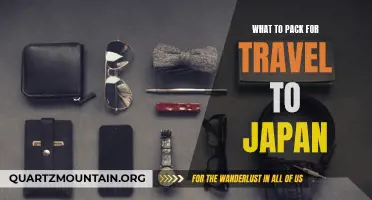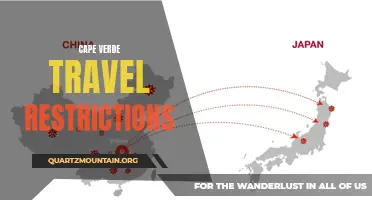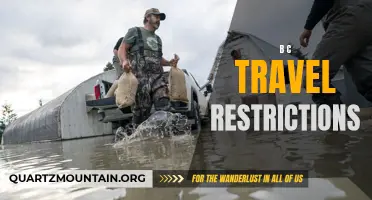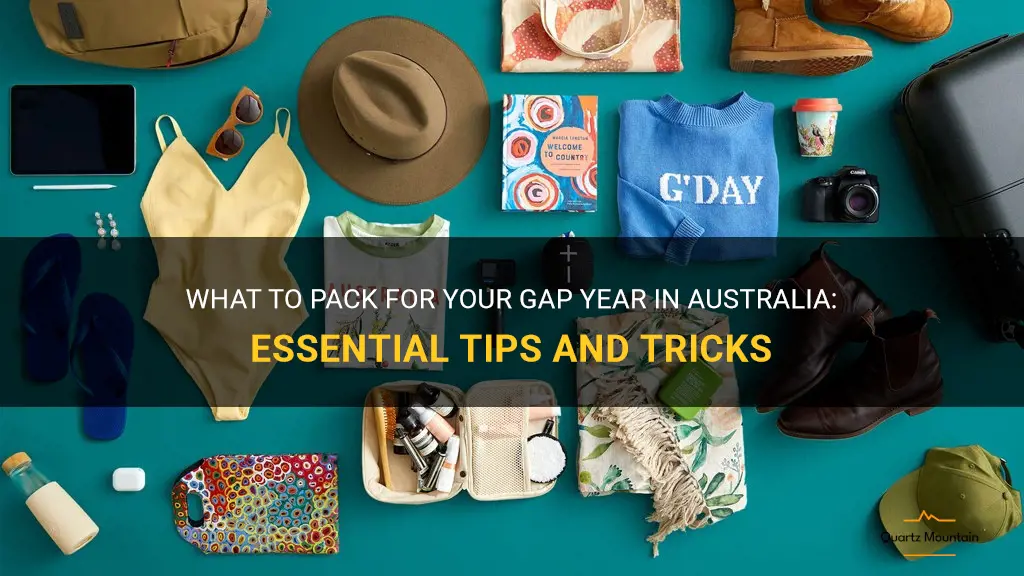
Are you planning on taking a gap year in Australia? If so, congratulations on making such an exciting decision! However, before you embark on your adventure, it's important to make sure you're well-prepared, starting with your packing. Australia is a vast and diverse country, offering everything from stunning coastlines to bustling cities and remote outback regions. To help you make the most of your gap year and ensure you have everything you need, we've put together this guide on what to pack for your gap year in Australia. Whether you're a nature lover, a city explorer, or an adventure seeker, we've got you covered with essential tips and tricks to make your packing process a breeze. So, grab a pen and paper and get ready to take notes on what to pack for your epic Australian gap year!
What You'll Learn
- What are the essential items to pack for a gap year in Australia?
- Are there any specific clothing items or gear that are recommended for certain activities or regions in Australia?
- How much luggage is appropriate to bring for a gap year in Australia?
- Are there any restrictions or items that are prohibited from being brought into Australia that I should be aware of when packing?
- Are there any specific documents or paperwork that I should make sure to bring with me when traveling to Australia for a gap year?

What are the essential items to pack for a gap year in Australia?
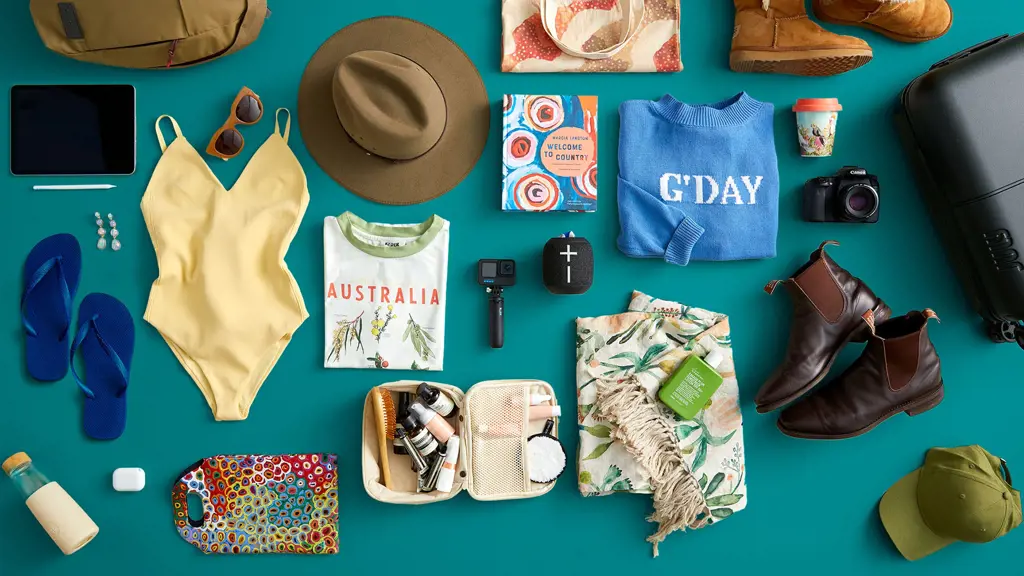
A gap year in Australia can be an incredible adventure, whether you're planning to work, travel, or study in the country. However, within this year-long stint, it's important to pack the right essentials to ensure a smooth and comfortable experience. Here are some essential items to consider when packing for your gap year in Australia:
- Visa Documentation: Before embarking on your gap year, make sure you have all necessary visa documentation sorted out. Depending on your purpose of visit, you may require a working holiday visa, a student visa, or a tourist visa. Ensure that your passport is valid for the duration of your stay and that you have a printed copy of your visa with you at all times.
- Climate-appropriate Clothing: Australia experiences a wide variety of climates, from the scorching heat of the Outback to the cool temperatures of the southern regions. Pack a range of clothing suitable for various weather conditions, such as lightweight, breathable fabrics for hot weather, and warm layers for colder climates. Don't forget essentials like swimwear, a hat, and sunscreen.
- Comfortable Walking Shoes: Australia is famous for its beautiful landscapes and outdoor activities, so it's crucial to pack a good pair of walking shoes. Whether you're planning to hike through national parks, explore the cities on foot, or work in the agricultural sector, comfortable and sturdy shoes will be your best companion during your gap year.
- Travel Adapter: Australia uses a unique power outlet configuration, so it's essential to pack a travel adapter to charge your electronic devices. This will ensure that you can stay connected and powered up during your gap year, regardless of where you are in the country.
- Travel Insurance: While nobody wants to think about worst-case scenarios, having travel insurance is crucial during a gap year. It provides coverage for unexpected medical expenses, trip cancellations, lost luggage, and other unforeseen circumstances. Make sure to thoroughly research and select a comprehensive travel insurance policy before your departure.
- Personal Medications: If you have any personal medications, ensure that you have an ample supply for the duration of your gap year, along with copies of your prescriptions or doctor's notes. It's always a good idea to have a basic first-aid kit with essentials like band-aids, pain relievers, and antiseptic cream.
- Money and Banking: It's advisable to have a mix of payment options during your gap year in Australia. Carry some cash for immediate expenses, but also have a debit or credit card that can be used internationally. Research the best banking options for international travelers and inform your bank of your travel plans to avoid any issues with using your cards abroad.
- Backpack or Suitcase: Consider your preferred mode of travel and the length of your stay when choosing between a backpack or suitcase. Backpacks are ideal for those planning to travel frequently and stay in hostels, while suitcases provide more storage space and are suitable for longer stays or those planning to work in one location.
- Electronic Devices: Whether it's a smartphone, laptop, or camera, electronic devices are essential for staying connected, documenting your experiences, and researching local attractions. Ensure that you have the necessary chargers, adapters, and backup storage options for your devices.
- Language and Travel Guides: Although English is the primary language spoken in Australia, having a language guide can be helpful, especially if you plan to visit indigenous communities or remote areas. Additionally, travel guides can provide valuable information on local attractions, transportation options, and safety tips.
Packing the right essentials for your gap year in Australia will set you up for a successful and memorable experience. Be sure to prioritize comfort, safety, and practicality when selecting items for your trip, and don't forget to have fun exploring everything that this amazing country has to offer!
The Essential Items for a Successful Nerf War: What to Pack
You may want to see also

Are there any specific clothing items or gear that are recommended for certain activities or regions in Australia?

Australia is a diverse country with a range of climates and landscapes, so it's important to wear appropriate clothing and gear for different activities and regions. Whether you're planning to explore the outback, go hiking in the mountains, or relax on the beach, here are some recommendations to ensure you're prepared for the conditions.
In the Outback:
The Australian outback is known for its hot and dry conditions, so it's essential to wear light and breathable clothing. Opt for loose-fitting, long-sleeved shirts and trousers to protect your skin from the harsh sun and prevent insect bites. A wide-brimmed hat is also a must-have to shield your face and neck from the intense sun rays. Additionally, investing in a good pair of sturdy, closed-toe shoes or hiking boots is recommended for walking on uneven terrain and protecting your feet from potential hazards like snakes or scorpions.
In Tropical Regions:
Northern Australia, particularly Queensland and the Northern Territory, experiences tropical weather with high humidity and heavy rainfall. Lightweight and moisture-wicking clothing made from natural fibers such as cotton or linen are ideal to keep you cool and comfortable. Consider wearing long-sleeved shirts and trousers to protect yourself from mosquitoes and other insects, especially during dawn and dusk when they are most active. Don't forget a wide-brimmed hat and sunglasses for sun protection.
In Alpine Regions:
If you're planning to explore the Australian Alps or any other alpine region, you can expect cold temperatures, strong winds, and even snow during winter months. Layering is key to staying warm in these conditions. Start with a moisture-wicking base layer made from materials like merino wool or synthetic fabrics to keep you dry. Add a warm and insulating mid-layer such as a fleece jacket or down vest, and finish with a windproof and waterproof outer layer to protect you from the elements. It's crucial to wear proper insulated and waterproof footwear, thermal socks, gloves, and a beanie to keep extremities warm.
On the Coast:
Australia is famous for its stunning beaches, and if you're planning to spend time along the coast, swimwear is a must. However, it's essential to remember to wear sunscreen and a hat to protect yourself from the strong UV rays. Lightweight and loose-fitting clothing made from breathable materials like cotton or linen is ideal for keeping cool in the hot sun. A sarong or a beach cover-up is also handy for providing additional sun protection or for modesty when needed.
In conclusion, Australia's diverse climate and landscapes require different clothing items and gear for various activities and regions. Whether you're exploring the outback, adventuring in tropical areas, hiking in the alpine regions, or enjoying the coastal beaches, dressing appropriately will ensure you have a comfortable and enjoyable experience. Remember to always check the weather forecast and adjust your clothing accordingly to stay safe and comfortable during your time in Australia.
Packing Essentials for Your Trip to Philadelphia
You may want to see also

How much luggage is appropriate to bring for a gap year in Australia?
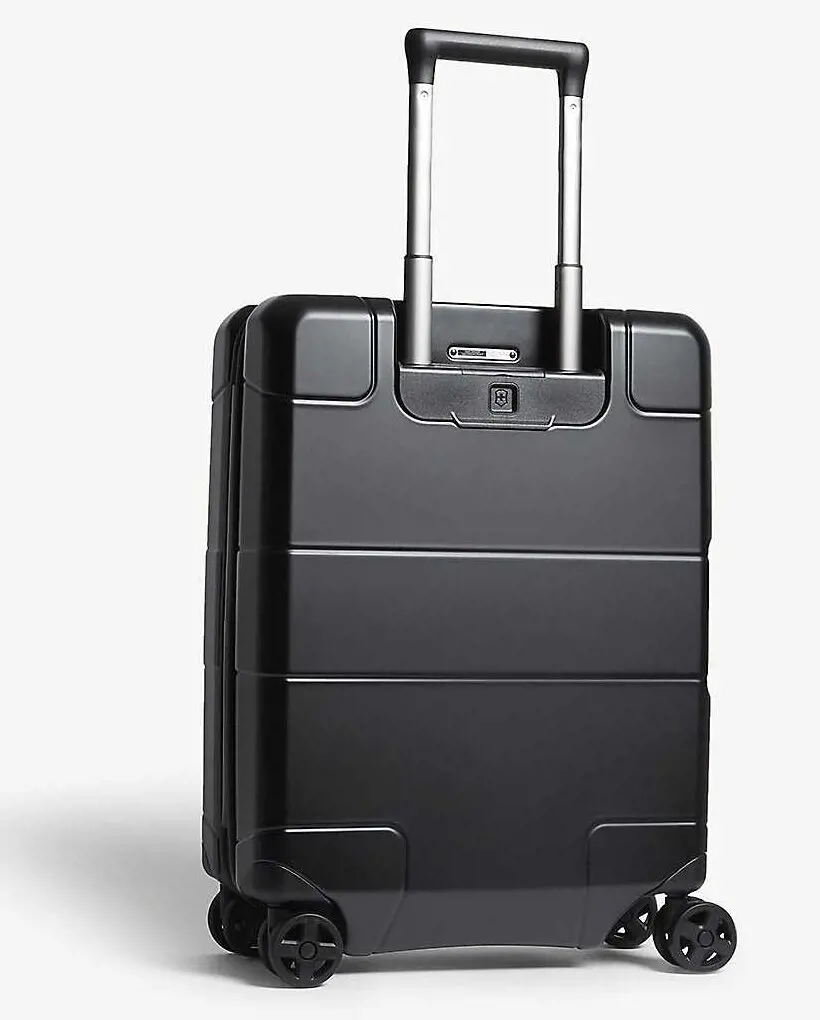
When preparing for a gap year in Australia, one of the most important considerations is how much luggage to bring. It's essential to travel light but also have enough supplies to last for an extended period of time. In this article, we'll discuss the appropriate amount of luggage to bring for a gap year in Australia, taking into account scientific research, experience-based advice, step-by-step guidelines, and examples.
Scientific research suggests that traveling with a smaller, well-packed bag is more convenient and practical. A study conducted by psychologists at the University of California found that individuals who packed lightly tend to have more positive travel experiences. This is because they are less stressed and easily able to navigate through crowded airports and public transportation systems.
Based on experience, seasoned travelers recommend bringing a backpack or a small rolling suitcase for a gap year in Australia. These types of luggage are versatile, easy to carry, and provide ample space for essentials. It's important to choose a bag that is durable and waterproof to protect belongings from the unpredictable Australian weather.
To determine the appropriate amount of luggage, it's advisable to make a detailed packing list. This list should include essentials such as clothing, toiletries, and electronics. When it comes to clothing, pack lightweight and versatile items that can be easily layered. Australia's weather can vary greatly, so it's important to bring clothing suitable for both hot and cold climates.
Additionally, it's important to pack toiletries in travel-sized containers to minimize space. Consider buying toiletries as needed while in Australia to avoid carrying heavy items unnecessarily.
Electronics are another essential consideration. For a gap year, it's common to bring a smartphone, a camera, and a laptop or tablet. These devices should be packed securely in a padded case to protect them during travel.
As for examples, here is a sample packing list for a gap year in Australia:
Clothing:
- Lightweight t-shirts and tank tops
- Shorts and skirts
- Long pants and jeans
- Sweaters or jackets for cooler evenings
- Swimwear and a beach towel
- Comfortable walking shoes
Toiletries:
- Travel-sized shampoo, conditioner, and body wash
- Toothbrush and toothpaste
- Deodorant
- Sunscreen
- Insect repellent
Electronics:
- Smartphone and charger
- Camera and extra batteries
- Laptop or tablet with charger
- Universal power adapter
In conclusion, when preparing for a gap year in Australia, it's best to travel light but have enough essentials to last for an extended period. Scientific research and experienced-based advice point towards packing a small, well-packed bag. By making a detailed packing list and choosing versatile items, travelers can ensure they have the appropriate amount of luggage for their gap year adventure in Australia.
The Ultimate Packing Guide for the Trans-Siberian Railway Journey
You may want to see also

Are there any restrictions or items that are prohibited from being brought into Australia that I should be aware of when packing?

When packing for a trip to Australia, it is important to be aware of the restrictions and prohibited items that you cannot bring into the country. Australia has strict quarantine laws in place to protect its unique flora and fauna from pests and diseases. Failure to comply with these regulations could result in hefty fines or even imprisonment. Here are some important things to keep in mind when packing for your visit to Australia:
- Food and Agricultural Products: Australia has some of the strictest regulations on bringing in food and agricultural products. You are not allowed to bring in any fruit, vegetables, meat, fish, eggs, or dairy products. This includes dried or preserved foods, and even pet food. It is always a good idea to check the specific regulations and requirements before bringing any food items.
- Medications: If you are bringing any medications with you to Australia, make sure to declare them on your arrival. Certain medications, including prescription drugs, may require special permits or documentation. It is advisable to bring a letter from your doctor explaining your medical condition and the purpose of the medication.
- Animal and Plant Products: Australia has strict regulations on bringing in animal and plant products, including fur, feathers, shells, bones, and seeds. These items could potentially carry pests or diseases that could harm the local environment. It is best to avoid bringing any such items unless you have proper permits or documentation.
- Weapons and Firearms: Australia has strict gun control laws, and bringing firearms or weapons into the country is strictly prohibited. This includes firearms, ammunition, swords, knives, and other weapons. There are specific requirements and permits for licensed firearm owners or people involved in certain professions, such as law enforcement or military personnel.
- Illegal Drugs: It goes without saying that bringing illegal drugs into any country, including Australia, is strictly prohibited and can result in serious legal consequences. The penalties for drug offenses in Australia are severe, and ignorance of the law is not a defense.
- Protected Wildlife: Australia is home to many unique wildlife species, and it is illegal to bring any live or dead animals, animal products, or parts of animals into the country without proper permits. This includes products made from endangered species, such as ivory or tiger bone.
- Cultural Heritage Items: Australia has strict regulations on the import and export of cultural heritage items, including indigenous art and artifacts. It is important to obtain the necessary permits and documentation if you plan to bring any such items into or out of the country.
It is always a good idea to check the official website of the Australian Department of Agriculture, Water and the Environment for the most up-to-date information on what you can and cannot bring into the country. This will help ensure a smooth and hassle-free entry into Australia while also respecting the country's strict quarantine and environmental regulations.
The Ultimate Checklist for Packing for a Memorable Trip with Friends
You may want to see also

Are there any specific documents or paperwork that I should make sure to bring with me when traveling to Australia for a gap year?
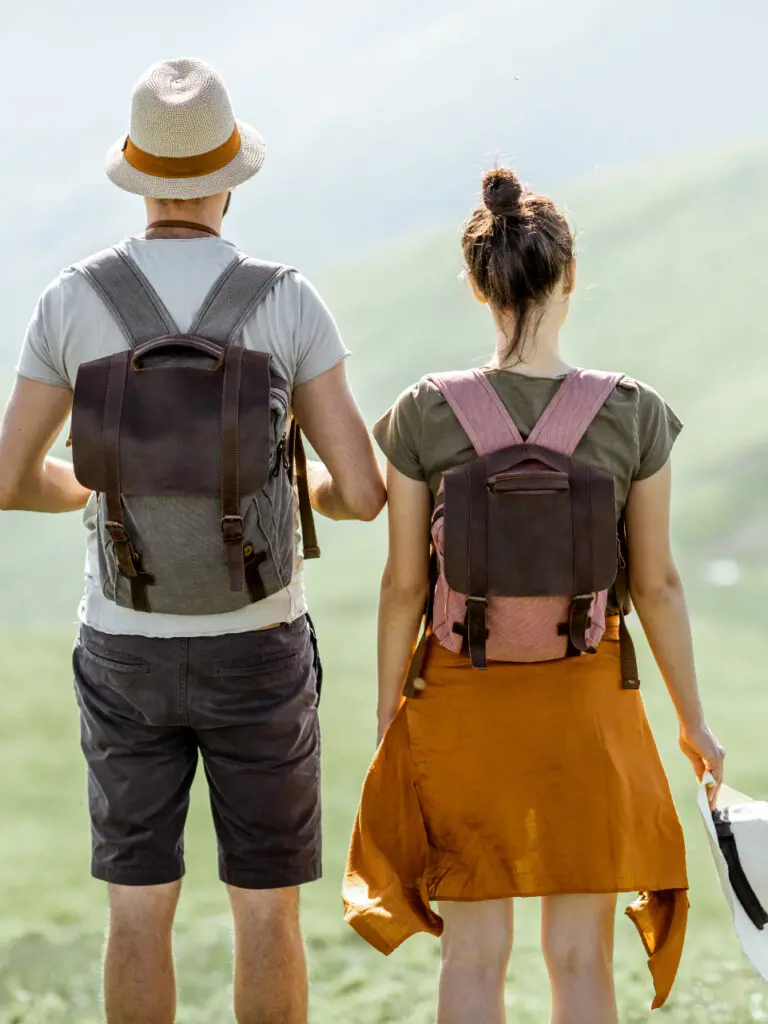
If you're planning to travel to Australia for a gap year, there are a few important documents and paperwork you should make sure to bring with you. These documents will help ensure a smooth and hassle-free travel experience. Here are some of the most important ones:
- Passport: This is the most crucial document you need to bring with you. Make sure your passport is valid for at least six months beyond your intended stay in Australia. Check the expiration date and renew it if necessary. Also, remember to make copies of your passport and keep them in a separate location.
- Visa: Depending on your nationality, you may need a visa to enter Australia. It's important to research the visa requirements well in advance and apply accordingly. Make sure to have a printed copy of your visa approval letter and keep it handy during your travel.
- Proof of Health Insurance: Australia has a high standard of healthcare, but it can be costly for non-residents. It's essential to have comprehensive health insurance coverage during your stay in Australia. Carry a printed copy of your health insurance policy with you and keep it in a safe place.
- International Driver's License: If you plan to rent a car or drive in Australia, it's recommended to get an international driver's license. This document is an official translation of your home country's driver's license and is widely accepted in Australia. Make sure to carry your original driver's license along with the international driver's license.
- Student or Work Documentation: If you plan to study or work during your gap year in Australia, make sure to bring all the necessary documentation. This may include acceptance letters from educational institutions, work contracts, or any proof of enrollment or employment. Having these documents with you will make it easier to prove your intentions to Australian immigration officials.
- Bank Statements and Proof of Funds: It's important to show that you have enough funds to support yourself during your stay in Australia. Carry recent bank statements or any other proof of financial capability, such as traveler's cheques or credit cards. This will help you during the visa application process and may be required upon arrival in Australia.
- Emergency Contact Information: It's always a good idea to have a list of emergency contact numbers, both in your home country and in Australia. This will help you in case of any unforeseen situations or emergencies. Keep a printed copy of this information with you at all times.
Remember to keep all your important documents in a safe and secure place during your travel. It's recommended to make photocopies of all your documents and keep them separate from the originals. Additionally, you can store digital copies of your documents in a secure online location or email them to yourself for easy access.
By ensuring you have all the necessary documents and paperwork, you can have a worry-free and enjoyable gap year in Australia. It's always better to be prepared and have everything in order before embarking on your journey. Safe travels!
Must-Have Items for a Two Week Trip to Cambodia: Your Complete Packing Guide
You may want to see also
Frequently asked questions
When packing for your gap year in Australia, it's important to bring a variety of clothing items to suit the diverse climates you may encounter. Be sure to pack lightweight and breathable clothing for the hot summers, including tank tops, shorts, and light dresses. For the cooler months, pack a few warmer layers such as a light jacket, sweaters, and long pants. Don't forget to bring swimwear, as Australia is known for its beautiful beaches. Additionally, pack comfortable walking shoes, a hat, sunglasses, and sunscreen to protect yourself from the sun.
If you plan to explore Australia's stunning landscapes and go on hiking adventures, it is recommended to pack appropriate gear. Invest in a sturdy pair of hiking boots that are comfortable and provide ankle support. Pack lightweight and moisture-wicking clothing for hiking trips, as well as a backpack to carry your essentials, such as water, snacks, and a first aid kit. It's also important to bring a hat, sunglasses, and sunscreen to protect yourself from the sun during your hikes.
When traveling to Australia for a gap year, you will need a valid passport. It's important to ensure that your passport has at least six months of validity remaining before it expires. Depending on your nationality, you may also need to apply for and obtain a visa before entering the country. It is recommended to check the visa requirements for your specific nationality and apply for any necessary visas well in advance of your trip.
Australia is home to various insects, including mosquitoes, so it is advisable to bring insect repellent with you. This will help protect you from mosquito bites and reduce the risk of contracting mosquito-borne diseases such as dengue fever or Ross River virus. Additionally, consider bringing a mosquito net for sleeping if you plan to stay in areas with a higher mosquito population, such as tropical regions.
Aside from clothing and toiletries, it's recommended to pack a few essential travel accessories for your gap year in Australia. These include a universal power adapter to charge your electronic devices, a portable charger to keep your phone powered on-the-go, a money belt or travel wallet to keep your belongings safe, a reusable water bottle to stay hydrated, and a compact umbrella in case of unexpected rain showers. It's also a good idea to have a copy of important documents such as your passport, travel insurance, and emergency contact numbers.


